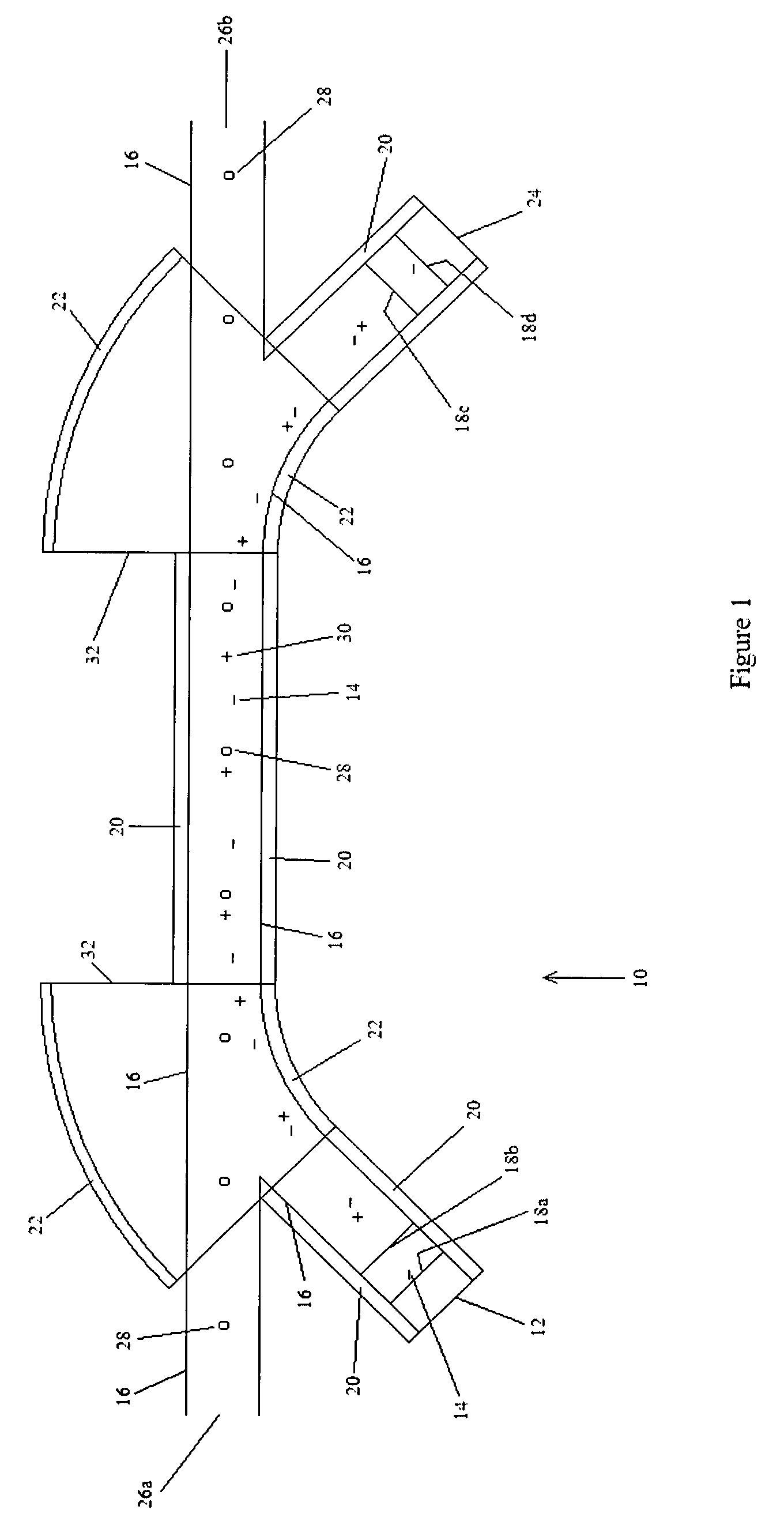Low energy electron cooling system and method for increasing the phase space intensity and overall intensity of low energy ion beams
a low energy electron cooling and phase space intensity technology, applied in the field of particle beam physics devices, can solve the problems of electron beam imperfections being transferred to the electron beam, ion beam initiation energy is very low by particle beam standards, and the electron beam produces much more energy, so as to improve the achievable intensity and beam quality, optimize the effect of end-product production and large current in the electron beam
- Summary
- Abstract
- Description
- Claims
- Application Information
AI Technical Summary
Benefits of technology
Problems solved by technology
Method used
Image
Examples
Embodiment Construction
[0028]An electron cooling system 10 for increasing the phase space intensity and overall intensity of low energy particle beams is shown in FIG. 1. The electron cooling system 10 utilizes a combination of elements, including the electron supply device such as an electron cathode 12 for supplying a beam of electrons 14, a vacuum chamber 16 for containing particles, electrodes 18 to provide electric fields to accelerate or decelerate the electron beam and which serve to trap neutralizing-background-ions, solenoidal 20 and torroidal 22 wire windings to provide guiding and containing magnetic fields, an electron collector including a collection plate 24 having a material surface to collect the electrons 14 after they have performed their function, and ports 26 to allow beam particles 28 to enter and leave the electron cooling system 10. Positive neutralizing-background-ions 30, trapped by the fields of the electrodes 18, solenoids 20, and torroids 32 are also shown in FIG. 1.
[0029]The e...
PUM
 Login to View More
Login to View More Abstract
Description
Claims
Application Information
 Login to View More
Login to View More - R&D
- Intellectual Property
- Life Sciences
- Materials
- Tech Scout
- Unparalleled Data Quality
- Higher Quality Content
- 60% Fewer Hallucinations
Browse by: Latest US Patents, China's latest patents, Technical Efficacy Thesaurus, Application Domain, Technology Topic, Popular Technical Reports.
© 2025 PatSnap. All rights reserved.Legal|Privacy policy|Modern Slavery Act Transparency Statement|Sitemap|About US| Contact US: help@patsnap.com



